Tuna
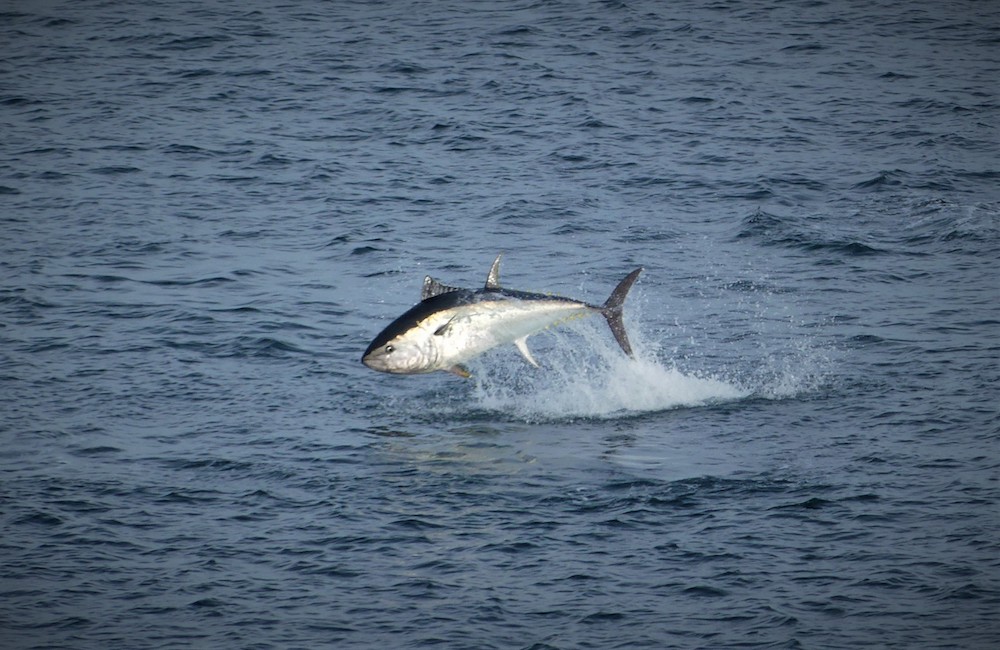
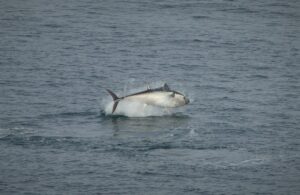
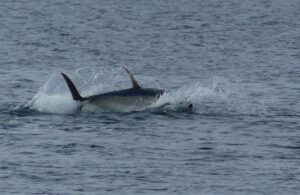
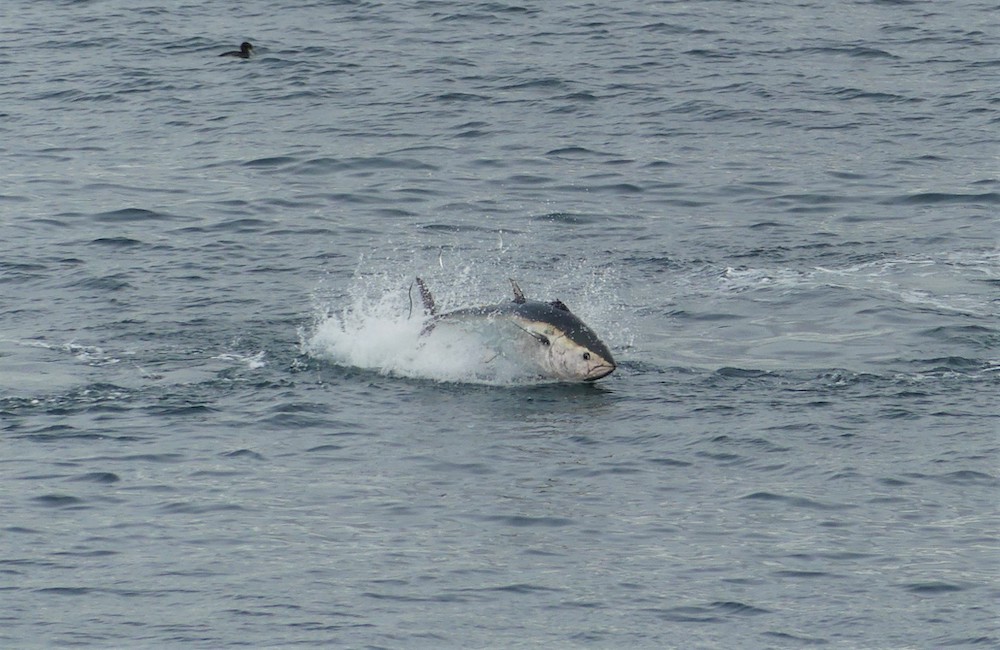
Tuna Pictures courtesy of Peter Nason of Cornwall Wildlife and Walking tours
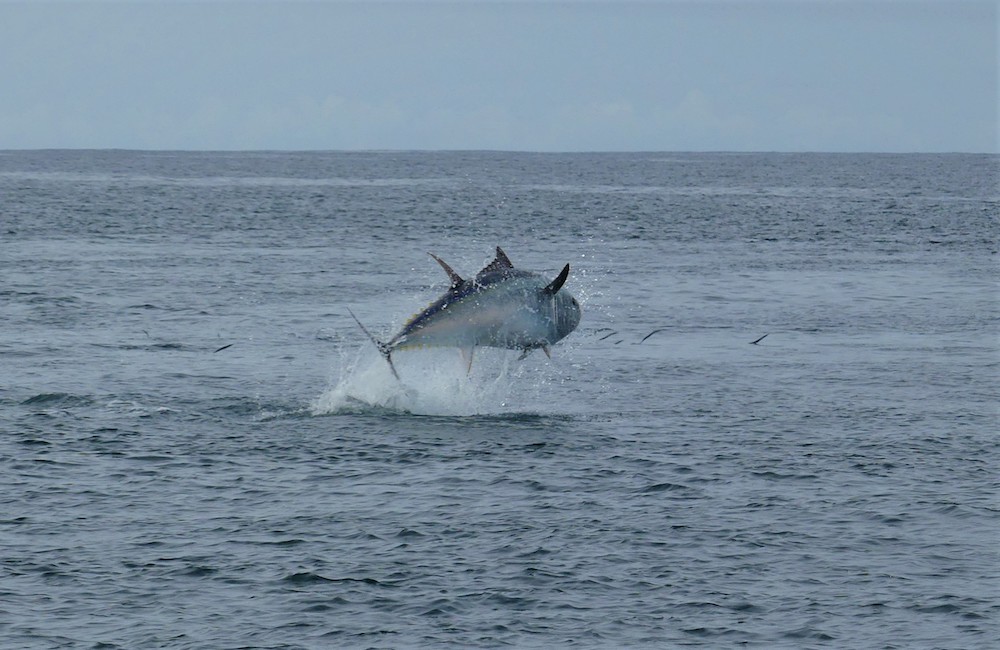
The body of the Atlantic bluefin tuna is rhomboidal in profile and robust. The head is conical and the mouth rather large. The head contains a “pineal window” that allows the fish to navigate over its multiple thousands-of-miles range. Their color is dark blue above and gray below, with a gold coruscation covering the body and bright yellow caudal finlets. Bluefin tuna can be distinguished from other family members by the relatively short length of their pectoral fins. Their livers have a unique characteristic in that they are covered with blood vessels (striated). In other tunas with short pectoral fins, such vessels are either not present or present in small numbers along the edges. Fully mature adult specimens average 2–2.5 m (6.6–8.2 ft) long and weigh around 225–250 kg (496–551 lb). The largest recorded specimen taken under International Game Fish Association rules was caught off Nova Scotia, an area renowned for huge Atlantic bluefin, and weighed 679 kg (1,497 lb) and was 3.7 m (12 ft) long. The longest contest between man and tuna fish occurred near Liverpool, Nova Scotia in 1934, when six men taking turns fought a 164–363 kilograms (361–800 lb) tuna for 62 hours. Both the Smithsonian Institution and the U. S. National Marine Fisheries Service has accepted that this species can weigh up to 910 kg (2,010 lb), though further details are lacking. Atlantic bluefin tuna reach maturity relatively quickly. In a survey that included specimens up to 2.55 m (8.4 ft) in length and 247 kg (545 lb) in weight, none was believed to be older than 15 years. However, very large specimens may be up to 50 years old. The bluefin possesses enormous muscular strength, which it channels through a pair of tendons to its lunate-shaped caudal fin for propulsion. In contrast to many other fish, the body stays rigid while the tail flicks back and forth, increasing stroke efficiency. It also has a very efficient circulatory system. It possesses one of the highest blood-hemoglobin concentrations among fish, which allows it to efficiently deliver oxygen to its tissues; this is combined with an exceptionally thin blood-water barrier to ensure rapid oxygen uptake. To keep its core muscles warm, which are used for power and steady swimming, the Atlantic bluefin uses countercurrent exchange to prevent heat from being lost to the surrounding water. Heat in the venous blood is efficiently transferred to the cool, oxygenated arterial blood entering a rete mirabile. While all members of the tuna family are warm-blooded, the ability to thermoregulate is more highly developed in bluefin tuna than in any other fish. This allows them to seek food in the rich but chilly waters of the North Atlantic

© NCI St Ives 2013 -2024
The National Coastwatch Institution is a charity registered to save lives around our coast — No. 1159975
